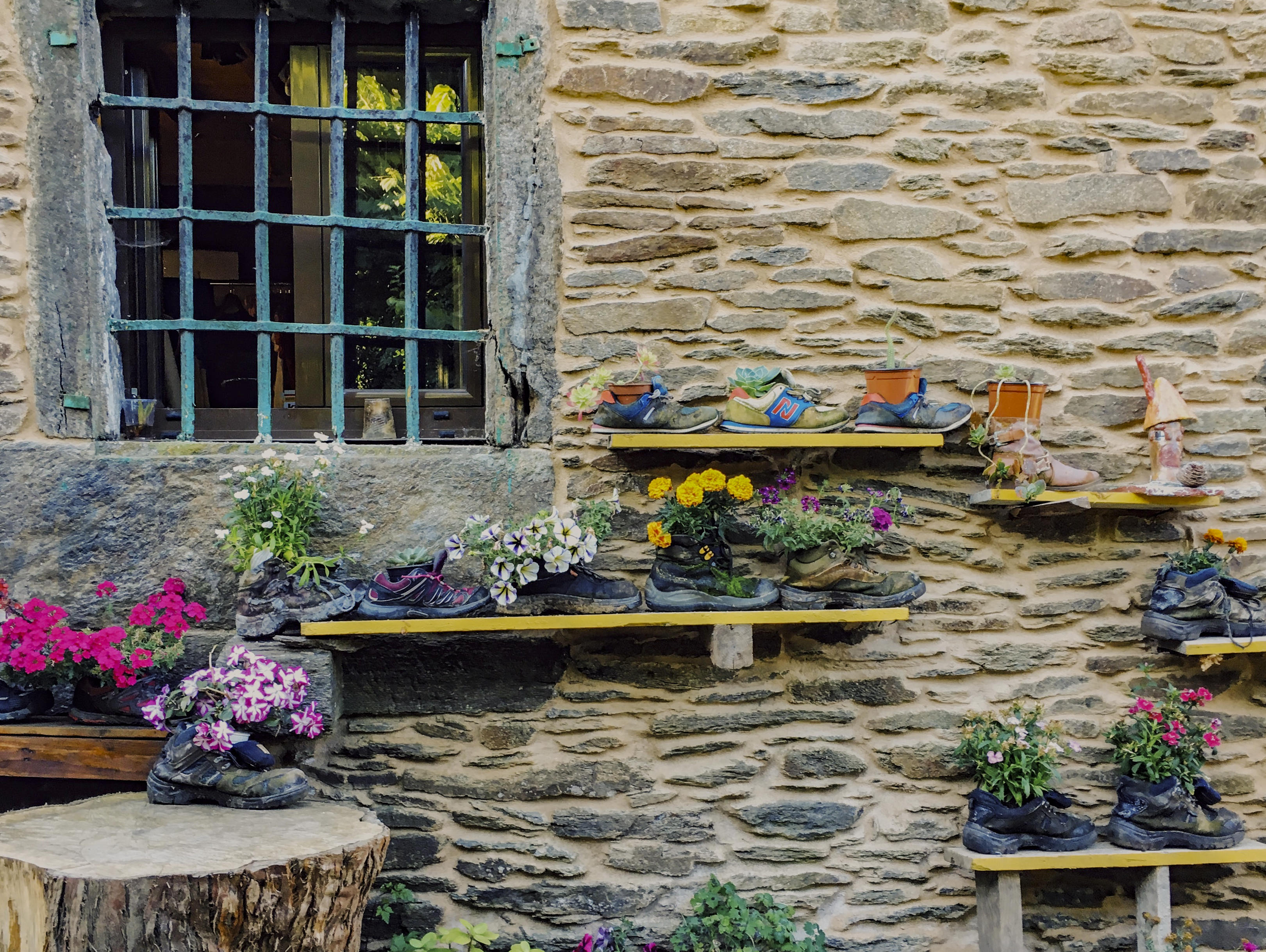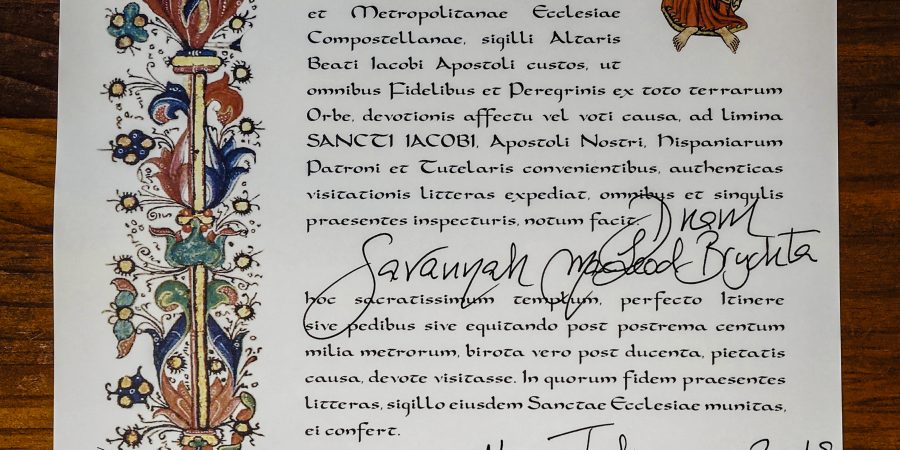Group 2 — Savannah, Maureen, and Weslee
Today’s hike was about average length for us. Though there were pretty sites, the scenery was not particularly breathtaking. The terrain was neither difficult nor flat. But from the cool, crisp morning in O Pedrouzo, we all sensed the uniqueness of this embarkation. This is the end, we knew.

Once the trail became more populated, we saw that we weren’t the only ones who felt this way. All of us were approaching individual conclusions, together. The obnoxious, loud school groups were suddenly not so annoying. Every passerby’s “¡Buen Camino!” was louder and more enthusiastic.
But before we get to the end, we must pause to make a note of what has happened along the way:
Our assignments — journaling, documenting our paths, marking the coordinates of significant places, recording soundscapes, reflecting on the landscapes — have made the experience so much richer. The Camino now exists for us as a layered, multidimensional experience. It is a living, breathing thing that has changed across history and geography and shifted under institutional hands and pilgrims’ feet. These things have made it what it is today and will change it into something else tomorrow. We are part of that equation now, bringing our own perceptions to the Camino, changing it in our own small way. And like any important interaction, it has changed us as well.
Most significantly, our concept of space and time has been altered. After several days of travelling only by foot, the world begins to feel larger and more grand. Scenery shifts slowly and gradually when it takes you two and a half hours to go a mile, so the world suddenly feels like a more cohesive place. Our focus on the path and little else has quieted the mind and simplified things.

Upon our ascent of Monte do Gozo, just outside Santiago, we beheld the cathedral in the hazy distance. The relief that fell over us as we reclined on the hill taking in the view of the city was deeply felt. After our six days of waking, we couldn’t help but imagine the greater impact experienced by those who started from even further east in St. Jean Pied de Port. Still we felt accomplished with our 78 miles in six days. After we trekked the last few exhausting miles into the city, we received recognition of that accomplishment — our Compostela certifications!
